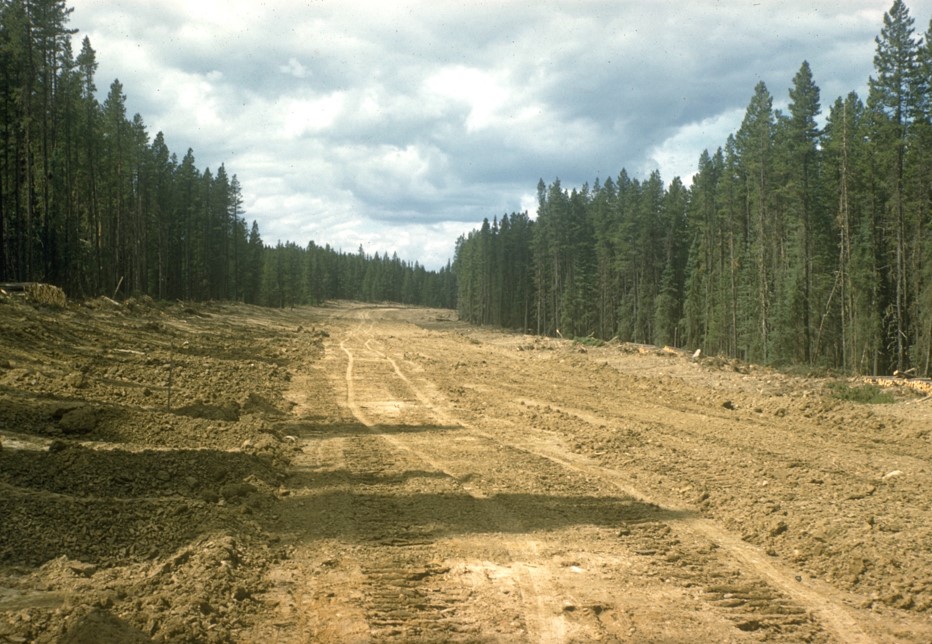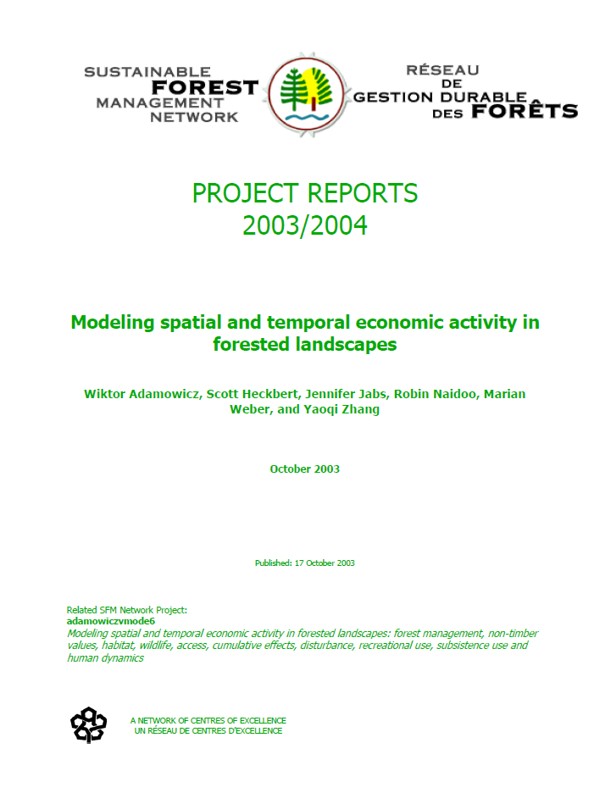Overview
To be complete, ecosystem based management must not only include the value of industrial resource extraction, but recreation and culture. The challenge is that on a single landbase, negotiation alone may be unable to resolve incompatible activities. Think forest harvest and recreational hiking. This research modeled a market-based tool called tradeable landuse rights to distribute land tenures using economic value. Regulators can pay to reduce habitat loss rates.

Photo credit: fRI Research
Background
In the boreal forest of western Canada, successful ecosystem based management will balance disturbances. This means governing activities so that there is enough disturbance to maintain a dynamic that is natural for this ecosystem, but not so much that a perpetual state of too young or too old forest becomes the status quo. The BEEST project was an attempt to achieve this balance through a market-based incentive tool of landscape management.
Disturbances occur as a matter of policy, whether through permitting disturbance through resource extraction tenures, deferring disturbance through suppressive actions or preventing disturbance through protection measures. The BEEST project imagined how to govern these competing interests using Tradable Landuse Rights (TLR).
TLR to manage landscape disturbances can take a number of forms; cap and trade, baseline or credit. The key is to identify a value for disturbances, inventory the starting condition and monitor change. While this remains a challenge, if achievable, TLR could prove to be an effective way to manage disturbances where there are multiple commercial and non-commercial interests on a regional landbase.
The BEEST program used simulation models to test TLR performance on a Forest Management Area in Alberta’s boreal forest region.

Photo credit: iStock
Innovation
For EBM to work, there will need to be a radical rethinking of how land tenure rights are managed. Currently, tenures are allocated by uncoordinated government agencies based on long-standing agreements based largely on economic return. TLRs represent a radical, and potentially reasonable break from this tradition, buy considering more than economics as the baseline consideration. This is fundamental to EBM implementation. Although not without issues (how to manage natural disturbances, equity among stakeholders, setting disturbance ranges), TLRs are an innovative way to successfully manage destructive cumulative effects where traditional tenure allocation has failed.
Discovery
Under Alberta’s public land management system, the cost of habitat loss is only considered after economics are accounted for, and there is no reason for resource sectors to coordinate activities, resulting in destructive cumulative effects. The results of the BEEST project show that TLR can enable title-holders to disturb public forest in a way consistent with natural patterns while managing cumulative effects. TLRs force governments to clearly set land-use objectives. This allows all stakeholders to know and debate alternative land-uses rather than the current focus which focus’ on the merits of individual projects.
The models also found that TLRs are not without challenges. Third-party effects such as noncompliance, and a robust process to determine how rights are allocated at the outset are critical to resolve. The determination of initial rights is almost always based on historical use, and the dominance of a few, large players suggests that Alberta will need to move away from grandfathering. As well, its success will rely on enforcement and monitoring, areas where regulatory agencies have not traditionally been strong. Noncompliance and issues associated with monitoring and enforcement can be addressed only through the dedication of sufficient resources.
Where in the wheel?
TLR is a coarse filter approach to EBM. Economic criteria determine how development and protection are distributed regionally. The regulator manages habitat loss using thresholds and setting a price for disturbance. A tradeoff between habitat loss and natural biodiversity patterns increases the utility (value) of habitat protection. But because it is a coarse filter, TLRs are a partial solution to reduce cumulative effects and cannot protect sites with rare local features or social significance (fine filters).
Work underway to assess the risk to biodiversity loss of alternative landscape designs and to identify habitat thresholds for species at risk and/or vulnerable habitat types will contribute to how TLRs contribute to EBM.


